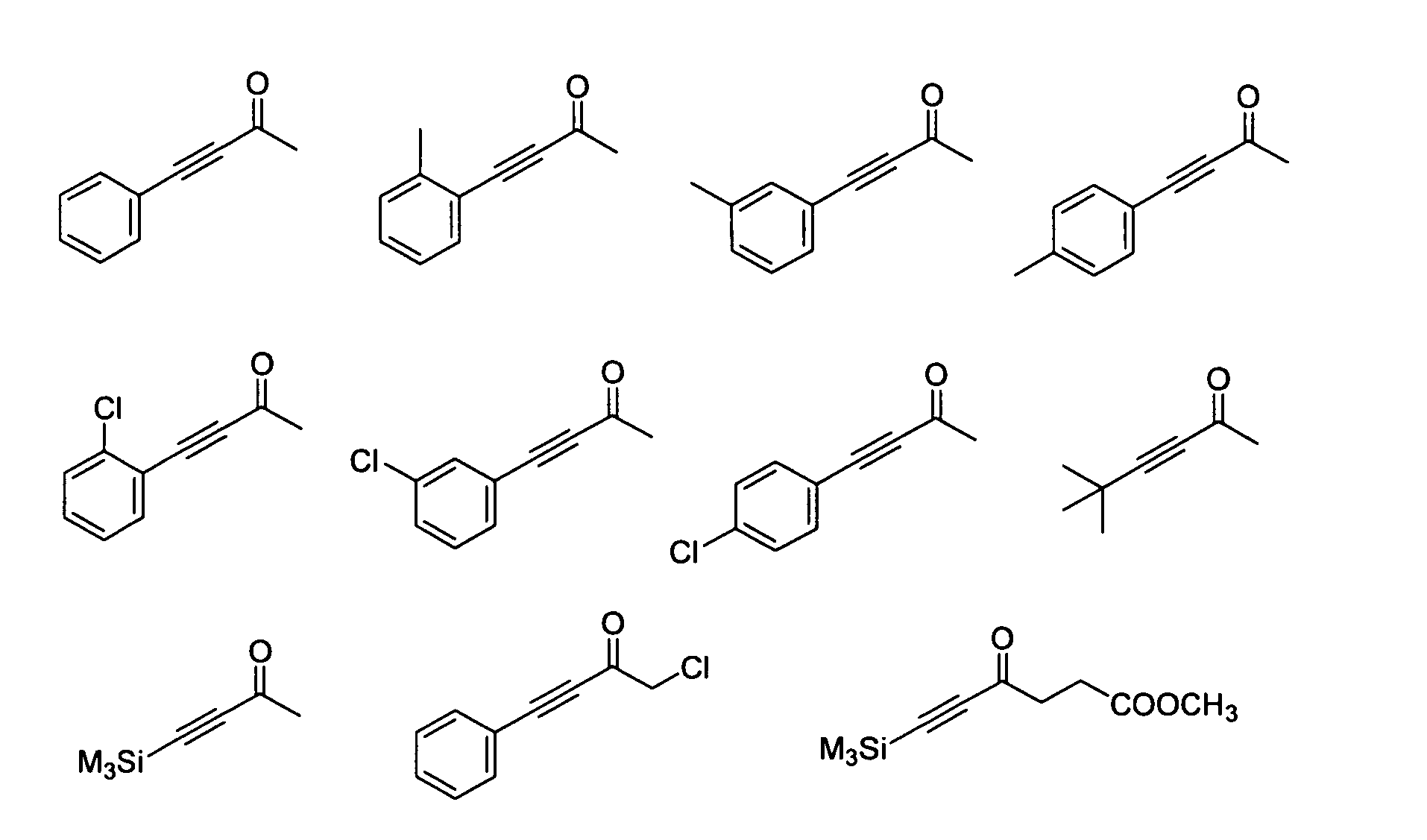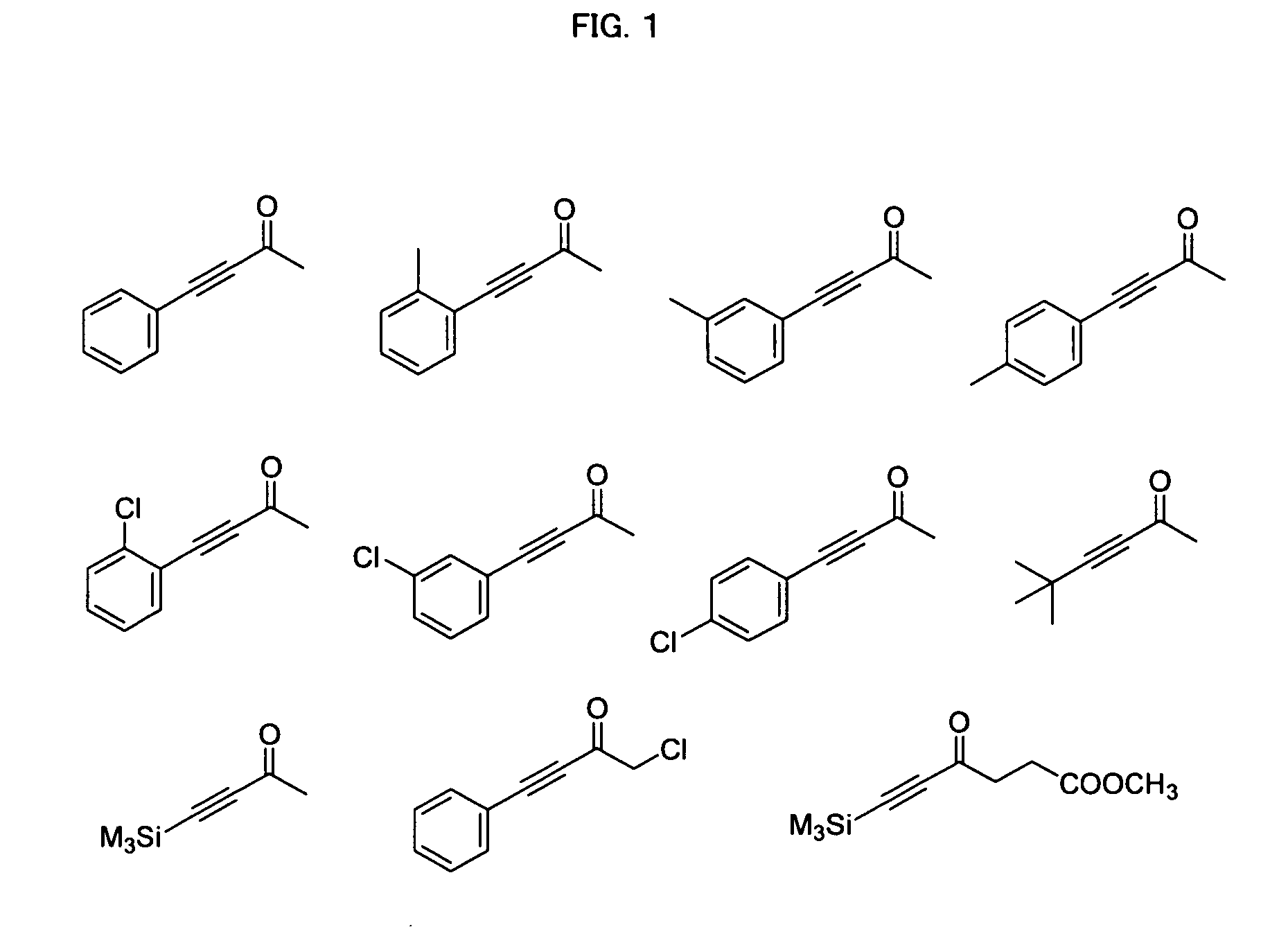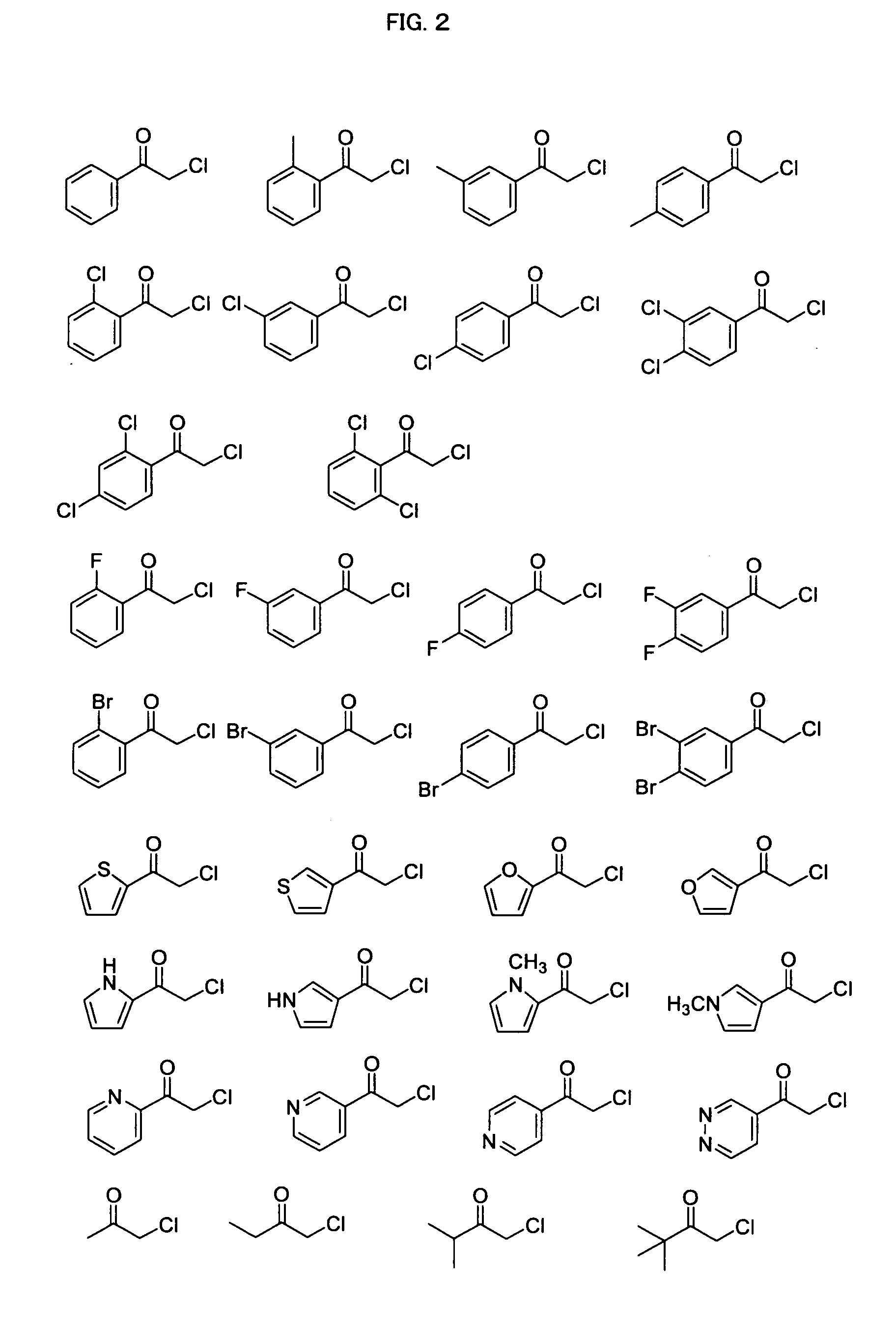Process for Producing Optically Active Alcohol
a technology reaction substrate, which is applied in the preparation of oxygen-containing compounds, organic compounds/hydrides/coordination complexes, physical/chemical process catalysts, etc., can solve the problems of difficult production of optically active alcohol from reaction substrates, unstable in the presence of bases, low yield or enantiomeric excess, etc., and achieve high stereoselectivity and yield. high
- Summary
- Abstract
- Description
- Claims
- Application Information
AI Technical Summary
Benefits of technology
Problems solved by technology
Method used
Image
Examples
example 1
[0066] An example of synthesizing (S)-4-phenyl-3-butyn-2-ol by hydrogenation of 4-phenyl-3-butyn-2-one is described below. A 50 mL stainless steel autoclave was charged with a ruthenium complex, RuCl[(S,S)-Tsdpen](p-cymene), (1.6 mg, 0.0025 mmol), followed by argon substitution. 4-Phenyl-3-butyn-2-one (0.291 mL, 2 mmol) and methanol (5 mL) were added. After pressurization with hydrogen, substitution was conducted five times. Hydrogen was charged to 50 atm to initiate reaction. After the reaction mixture was stirred for 11 hours at 30° C, the reaction pressure was reduced to normal. The product was analyzed by 1H-NMR and HPLC reporting synthesis of (S)-4-phenyl-3-butyn-2-ol in 90% ee and 63% yield. For the purpose of this description, in the nomenclature of the ruthenium complex, the metal atom, the anionic group, the diamine ligand, and the arene ligand are presented in this order from the left (see formula (4) below):
examples 2-10
[0068] Reaction was conducted under the same conditions as in EXAMPLE 1 but with different catalysts and / or hydrogen pressures to synthesize (S)-4-phenyl-3-butyn-2-ol. The results are shown in Table 1.
TABLE 1Exampleschiral Ru catH2 (atm)yield (%)ee (%)config2RuCl[(S,S)-Tsdpen](p-cymene)91881S3RuCl[(S,S)-Tsdpen](dmb)503291S4RuCl[(S,S)-Tsdpen](mesitylene)5010079S5RuCl[(S,S)-Tsdpen](teb)506191S6RuCl[(S,S)-Tsdpen](durene)502971S7RuCl[(S,S)-Tsdpen](pmb)503089S8RuCl[(S,S)-Tsdpen](hmb)507888S9RuCl[(S,S)-Msdpen](p-cymene)507888S10RuCl[(S,S)-(5,6,7,8-tetrahydronaphthalene-506991S2-yl)sulfonyl-dpen](p-cymene)
Conditions: chiral Ru cat 0.0025 mmol,
CH3OH 5 ml, S / C = 800, temp 30° C., time 11 h,
[ketone] = 0.4 M,
dmb: 1,4-dimethylbenzene,
teb: 1,3,5-triethylbenzene,
durene: 1,2,4,5-tetramethylbenzene,
pmb: pentamethylbenzene,
hmb: hexamethylbenzene.
examples 11-19
[0069] Reaction was conducted under the same conditions as in EXAMPLE 1 but with different substrate concentrations, reaction temperature, and / or additives to synthesize (S)-4-phenyl-3-butyn-2-ol. The results are shown in Table 2.
TABLE 2Examplesadditivetemp, ° C.yield (%)ee (%)config11—505087S12a—302775S13b—303388S14NaClO4308892S0.125 mmol15LiClO4308092S0.125 mmol16KClO4306492S0.125 mmol17BaClO4306993S0.125 mmol18NaPF6307590S0.125 mmol19NaBF4307793S0.125 mmol
Conditions:
[ketone] = 0.4 M in CH3OH, RuCl[(S,S)-Tsdpen](p-cymene) 0.0025 mmol, S / C = 800, H2 50 atm, time 11 h, solvent 5 ml,
a[ketone] = 0.1 M,
b[ketone] = 1.0 M.
PUM
| Property | Measurement | Unit |
|---|---|---|
| Optical activity | aaaaa | aaaaa |
Abstract
Description
Claims
Application Information
 Login to View More
Login to View More - R&D
- Intellectual Property
- Life Sciences
- Materials
- Tech Scout
- Unparalleled Data Quality
- Higher Quality Content
- 60% Fewer Hallucinations
Browse by: Latest US Patents, China's latest patents, Technical Efficacy Thesaurus, Application Domain, Technology Topic, Popular Technical Reports.
© 2025 PatSnap. All rights reserved.Legal|Privacy policy|Modern Slavery Act Transparency Statement|Sitemap|About US| Contact US: help@patsnap.com



